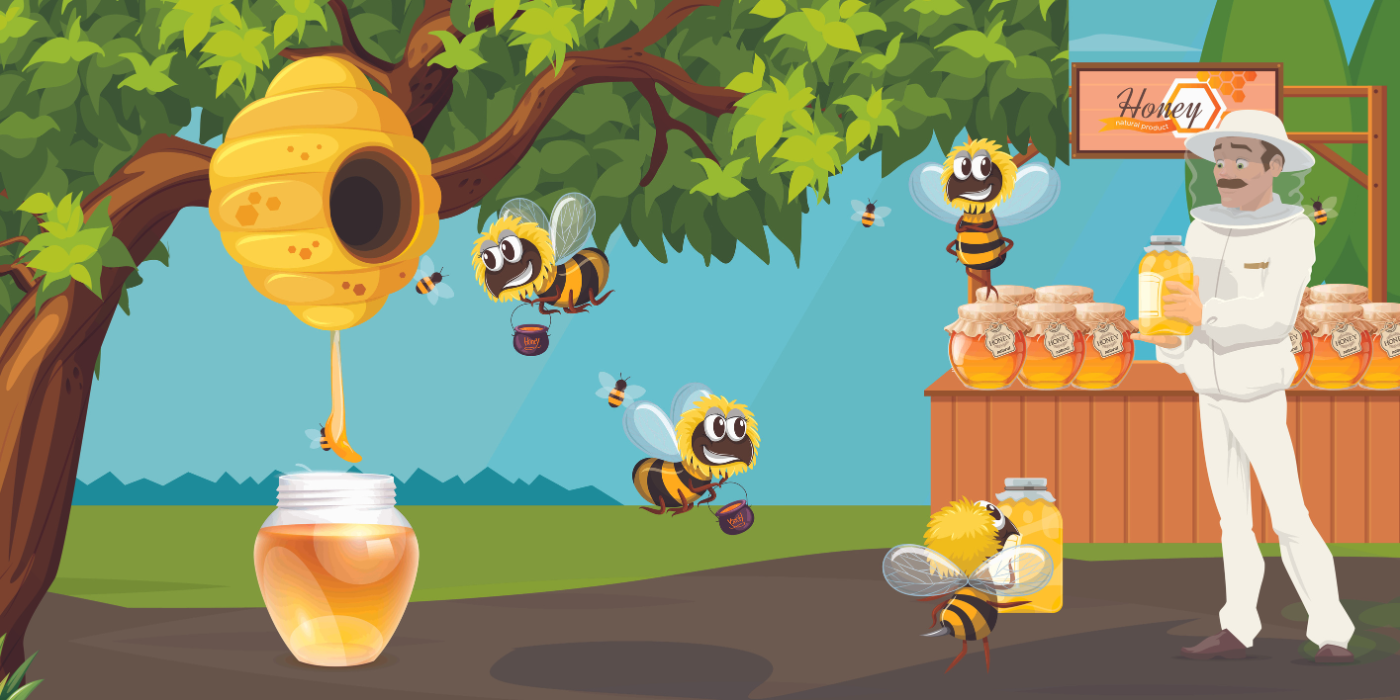
The Journey of Honey | From Hive to Table
Honey, the golden elixir cherished by civilizations for thousands of years, is a marvel of nature and a testament to the industriousness of bees. Each jar of honey represents an incredible journey from the hive to your table, involving complex processes and meticulous care. Let's explore this fascinating journey step by step, appreciating the hard work behind every drop.
The Role of Bees in Honey Production
The journey begins with bees foraging for nectar. Worker bees, equipped with specialized mouthparts, visit flowers and extract nectar using their proboscis. Nectar is a sugary liquid produced by flowers to attract pollinators. Bees store the nectar in their "honey stomach," separate from their digestive stomach, allowing them to transport it back to the hive.
Once the nectar-collecting bee returns to the hive, it transfers the nectar to a house bee through a process called trophallaxis. The house bee receives the nectar, adds enzymes, and begins the conversion of nectar into honey.
The enzymes added by bees break down the complex sugars in nectar into simpler sugars like glucose and fructose. This enzymatic process reduces the water content and prevents fermentation, gradually transforming the nectar into honey.
Bees store the partially converted nectar in hexagonal wax cells within the hive. They fan their wings to circulate air and accelerate the evaporation of water from the nectar. This evaporation process is crucial for thickening the nectar into honey and preventing spoilage.
Once the nectar reaches the desired consistency and water content (around 18%), bees seal the cells with a thin layer of beeswax. This capping preserves the honey and protects it from contamination, allowing it to be stored for future use.
Harvesting Honey
Beekeepers play a vital role in the honey production journey. They regularly inspect the hive to monitor the health of the colony and check the progress of honey production. Once the honey cells are capped, indicating that the honey is ready, the harvesting process begins.
Beekeepers carefully remove the frames containing the honeycomb from the hive. This process requires skill and gentleness to avoid disturbing the bees and damaging the comb.
To extract the honey, beekeepers first remove the wax cappings from the honeycomb cells. This can be done using an uncapping knife or fork, which gently slices through the wax without harming the honeycomb structure.
The uncapped frames are placed in a honey extractor, a device that uses centrifugal force to spin the frames and extract the honey. As the frames spin, the honey is flung out of the cells and collects at the bottom of the extractor.
Once extracted, the honey is filtered to remove any remaining bits of wax, propolis, or other debris. This filtration process ensures that the honey is pure and clear, ready for bottling.
The filtered honey is allowed to settle in a large tank, allowing any air bubbles to rise to the surface. This step ensures that the honey is smooth and free of impurities. After settling, the honey is poured into jars or bottles, sealed, and labeled for sale.
The Final Product
High-quality honey undergoes rigorous quality control checks to ensure it meets industry standards and consumer expectations. Factors like moisture content, color, and flavor are evaluated to guarantee consistency and excellence.
The bottled honey is then packaged for distribution. Labels typically include information about the honey's origin, floral source, and any certifications (such as organic or fair trade). This transparency helps consumers make informed choices about the honey they purchase.
Packaged honey is distributed to retailers, markets, and consumers. It might also be sold directly by beekeepers at local farmers' markets or through online stores. The journey from hive to table is complete as the honey reaches its final destination.
Finally, the honey arrives at your table, ready to be enjoyed. Whether drizzled over yogurt, spread on toast, or used as a natural sweetener in tea and recipes, each spoonful of honey is a reminder of the incredible journey it has undergone.
The journey of honey from hive to table is a testament to the intricate collaboration between bees and beekeepers. It showcases the dedication, skill, and care involved in producing this natural sweetener. Every jar of honey represents the labor of thousands of bees and the commitment of beekeepers who ensure its quality. As you savor the rich, golden goodness of honey, take a moment to appreciate the remarkable process that brings this sweet delight to your table.



Leave a comment